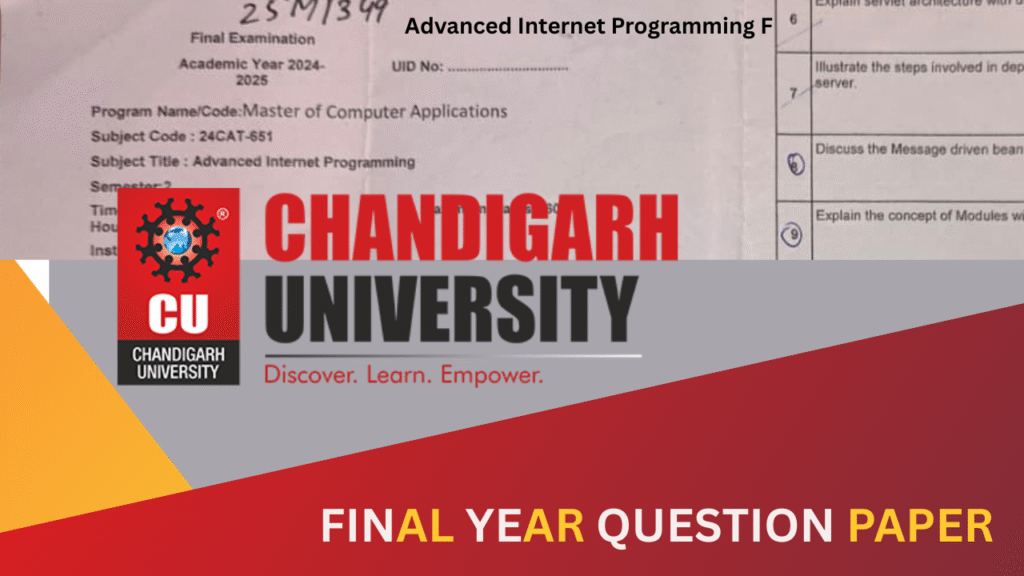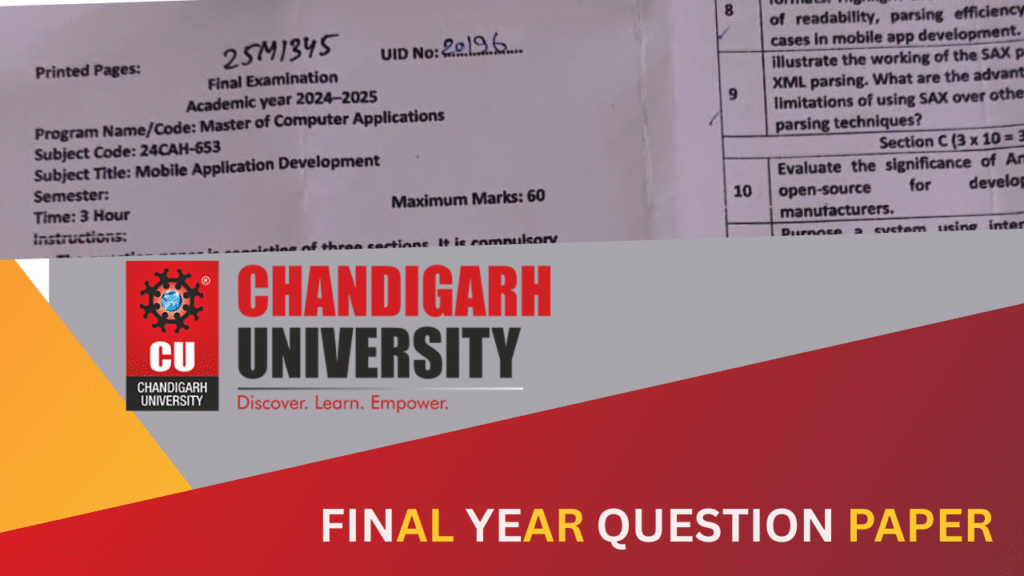📘 Unit-1 FAQ (50 Questions & Answers)
This will cover
Unit-1 syllabus (Material Design, Figma, Flutter, Dart, OOP).
1. Define Material Components in Android.
Material Components are ready-made UI elements (Buttons, Cards, TextFields) based on Google’s Material Design. They ensure consistent, modern UI across apps.
Example: MaterialButton provides styled buttons.
2. What is Elevation in Material Design?
Elevation is the z-axis depth that creates shadows in UI. It separates layers visually for hierarchy.
Example: CardView looks raised with elevation.
3. What is Typography in Android?
Typography controls font style, weight, and size in apps. It improves readability and user experience.
Example: Using
Roboto font in
TextView.
4. What are Themes in Material Theming?
Themes define global colors, fonts, and shapes for an app. They give uniformity to UI design.
Example: Light/Dark theme for an app.
5. List two examples of Material Components.
MaterialButton for actions.TextInputLayout for input fields. Example: Login form with styled input fields.
6. Define Material Structure and Layout.
It defines how UI elements are arranged. Material Design uses grids, spacing, and responsive layouts.
Example: ConstraintLayout in Android UI.
7. What is Material Theming?
It customizes Material Design with brand colors, shapes, and fonts. Makes apps unique yet consistent.
Example: Custom blue theme in banking app.
8. Role of Color in Material Design.
Colors highlight actions and provide visual identity. Material recommends primary, secondary, and accent colors.
Example: Green for success, red for errors.
9. Define Figma in one line.
Figma is a cloud-based collaborative design tool. It allows real-time prototyping and wireframing.
Example: Designing app login screen in Figma.
10. What is the use of Figma for mobile apps?
Figma creates UI mockups and interactive prototypes. It helps test designs before coding.
Example: Shopping app prototype with navigation flow.
11. List two features of Figma.
- Real-time collaboration.
- Cloud-based storage. Example: Two designers editing one file simultaneously.
12. Define Graphic Design.
Graphic design is creating visuals using typography, shapes, and images. It communicates ideas effectively.
Example: App logo created in Photoshop.
13. What is Material Design in UI?
Material Design is Google’s design language for UI. It uses grids, colors, shadows, and animations.
Example: Gmail app follows Material Design.
14. Why is Elevation important in UI?
Elevation creates depth and makes UI intuitive. It highlights focus areas.
Example: Raised button vs flat button.
15. Write two functions of Typography.
- Improves readability.
- Establishes visual hierarchy. Example: Headings in bold, body in regular font.
16. List two advantages of Themes.
- Consistent UI.
- Easy customization. Example: Switching from light mode to dark mode.
17. Define Flutter Framework.
Flutter is a cross-platform UI toolkit by Google. It uses a single codebase for Android/iOS apps.
Example: WhatsApp clone built in Flutter.
18. What is Dart Programming?
Dart is the official language for Flutter. It supports OOP and reactive programming.
Example:
print("Hello Dart");
19. Default language for Flutter.
The default language is
Dart. It’s optimized for UI building.
Example: Flutter widgets are written in Dart.
20. Define Widgets in Flutter.
Widgets are building blocks of Flutter apps. They describe both UI and behavior.
Example: Text("Hello") widget.
21. What are Material Buttons?
They are interactive buttons styled by Material Design. Used for primary and secondary actions.
Example: ElevatedButton("Submit").
22. Define OOP.
OOP is a programming style using classes and objects. It makes code reusable and organized.
Example: class Car {} in Dart.
23. Write two principles of OOP.
- Encapsulation.
- Inheritance. Example: Parent
Vehicle → Child Car.
24. Explain Material Layout.
It arranges elements using spacing, padding, and grids. Ensures responsive UI across devices.
Example: ConstraintLayout in Android app.
25. Define Material Theming with example.
Material Theming customizes color, typography, and shapes. Makes apps unique while following guidelines.
Example: Banking app with custom brand colors.
26. Write about AppBar in Material Design.
AppBar is the top navigation bar in apps. It shows title, actions, and navigation icons.
Example: Gmail’s top bar with search and menu.
27. Define Typography with two examples.
Typography defines text style and size. It ensures clarity and design consistency.
Example: H1 = Large Heading,
Body1 = Normal text.
28. Role of Color in Theming.
Color establishes identity and focus. Primary colors highlight major actions.
Example: Blue for “Login” button.
29. What is Layout Hierarchy in Android?
It shows parent-child structure of UI elements. Helps manage positioning and nesting.
Example: LinearLayout → TextView + Button.
30. Define Material Elevation.
Elevation is the shadow depth on UI elements. Higher elevation = more focus.
Example: FloatingActionButton with elevation.
31. Explain Figma as a design tool.
Figma is a collaborative web-based design app. It allows UI creation and prototyping.
Example: Designing a chat app UI in Figma.
32. List benefits of Figma.
- Real-time editing.
- Cross-platform (web & desktop). Example: Edit on Windows, view on iPhone.
33. What is Prototyping in Figma?
Prototyping creates clickable app flows. It tests user navigation before coding.
Example: Login → Dashboard → Logout flow.
34. Define Vector Editing in Figma.
Vector editing uses scalable paths and shapes. Designs remain sharp at any size.
Example: SVG icon design in Figma.
35. Why Figma is popular in UI?
Because it’s free, online, and collaborative. Supports real-time teamwork without installation.
Example: Multiple students designing one project.
36. Define Dart Syntax.
Dart syntax is similar to Java/C. It uses semicolons, classes, and functions.
Example:
var x = 10;
37. Write about Dart Functions.
Functions group reusable code blocks. They take inputs and return outputs.
Example:
int add(a,b)=>a+b;
38. What is Class in Dart?
Class is a blueprint for creating objects. It defines variables and methods.
Example:
class Student {}
39. Define Object in OOP.
Object is an instance of a class. It has properties and behaviors.
Example: Student s = Student();
40. Explain Inheritance in Dart.
Inheritance allows a class to use parent features. It promotes reusability.
Example: class Car extends Vehicle {}
41. What is Encapsulation?
Encapsulation hides data with access control. It secures object properties.
Example: Private variables with getters/setters.
42. Define Polymorphism with example.
Polymorphism allows one method many forms. Parent and child define same method differently.
Example: draw() in Circle and Square.
43. Explain Abstraction in Dart.
Abstraction hides implementation details. It shows only necessary functionality.
Example: abstract class Shape { draw(); }
44. Setup process of Flutter.
Install Flutter SDK → Set PATH → Install Android Studio. Run
flutter doctor to verify setup.
Example: flutter create myapp.
45. Define Hot Reload in Flutter.
Hot Reload updates UI instantly on code change. It saves time during development.
Example: Change button color → updates immediately.
46. Advantages of Flutter Framework.
- Single codebase for multiple platforms.
- Fast performance with Skia engine. Example: One app for iOS + Android.
47. Compare Flutter vs Native Android.
Flutter: Single code, faster dev. Native: Platform-specific, better hardware integration.
Example: Native uses Java/Kotlin, Flutter uses Dart.
48. Difference between Themes and Typography.
Themes define global color and shape. Typography defines text style and size.
Example: Blue theme + Roboto font.
49. What is UI Consistency?
Consistency means uniform design across screens. It improves usability and user trust.
Example: Same button style in all activities.
50. Write about Material Navigation Components.
Navigation components manage app movement between screens. They include Drawer, BottomNav, and Tabs.
Example: Instagram bottom navigation bar.





Questions bank unit 2 ke lia bhi .. dalo.. pahle se he..